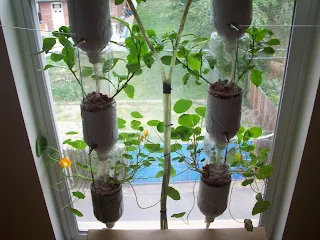Having plants with stunted growth can be very frustrating for any farmer or gardener. Seeing your plants not thriving as they should be is a bit disheartening. However, understanding the reasons behind stunted growth and implementing appropriate solutions can help your plants flourish once again.
Causes
of Stunted Growth.
1.
Poor Soil quality
Poor
soil is that which lacks essential nutrients that can hinder plant growth. The
only way you can know about the quality of your soil is by carrying out a soil
test to determine its pH level and nutrient content. If the soil is less of
nutrient, you can improve on the soil fertility by adding organic matter such
as compost or manure to encourage continuous growth.
2.
Improper Watering
Both under watering and over watering can stunt your plants growth. A plant should be
watered with the right amount of water, that which is able to meet their
specific needs. To avoid stunted growth, it is important to consider factors
such as soil drainage, plant type, and environmental conditions when developing
a watering schedule.
3.
Insufficient Light
Plants
require adequate light for photosynthesis, a process by which they produce
energy for growth. Insufficient light can result in weak, stunted growth. If potted,
you can position your plants in an area that receives maximum artificial
lighting, or you can consider supplemental lighting. If planting on a field,
choose an open area that receives maximum sunlight.
4.
Pests and Diseases
Pests
such as aphids, mites, and diseases like fungal infections can weaken plants
and stunt their growth. It is important to regularly inspects your plants for
any signs of pests and diseases and take the appropriate management strategies
on time.
5.
Temperature Stress
Extreme
temperatures, whether too hot or too cold, can negatively impact plant growth.
Providing adequate insulation or shading during extreme weather conditions can
help protect your plants. Mulching around the plants can help regulate the soil
temperatures as well.
6.
Root bound
When
plants outgrow their containers, their roots become crowded leading to stunted
growth. Transplanting them into larger pots or dividing them can alleviate this
issue.
Understanding
the reason behind stunted growth in plants is the first step towards
implementing effective solutions. By addressing the reasons, you will have
helped your plants overcome stunted growth and thrive once again.











.jpeg)








